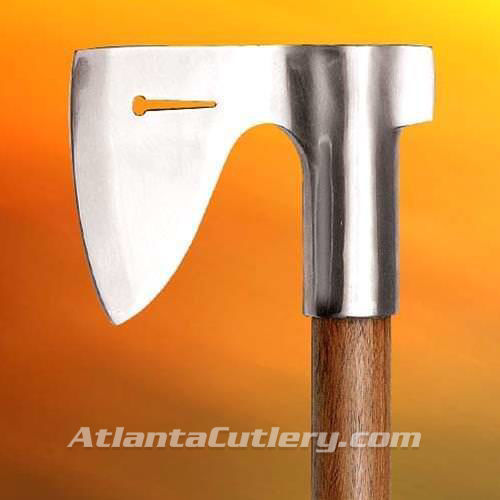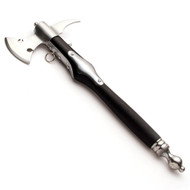Axes: Head Shapes and Types
31st Jul 2023
Wood and axes hold an important place in our evolution, and today, even with powerful and modern machinery helping us, it is amazingly satisfying to thwack and fell trees, chop and shape logs, and prepare campfire wood on our own with our axes. So, very often, we are asked, “How to choose the perfect axe?” Well, the answer is not straightforward and singular, as it was for Aesop’s honest woodcutter. While picking an axe, there is nothing which does not matter! To begin with, an axe comprises its handle and the head. Both the handle and the head hold several nuances in their simple-looking geometries, which you will begin to notice and understand with time.
However, the shape of the head is one of the most useful characteristics to determine the type of axe. So, if you are clear in your head about what you want your axe to do, go ahead, and choose from the following.

Cutting Ax: Also known as the felling ax and the single bit, these are all-rounders when it comes to the wood-cutting job. They possess thin, sharp blades with a tapered head, and hence, can whack strongly into the wood without much friction, and swing easily. Not just cutting logs, you can fell entire trees with these. If you could own only one axe, we would say, this is the one!
Splitting Ax: No, you are not just cutting wood every time. You may want to split the wood and tear it along its grains, and that is when you would need the splitting axe, or its bigger cousin, the blockbuster or splitting maul. With a wedge-shaped head and a broad butt (this side could be used as a hammer!), it drives into and cleaves the wood fibres adeptly with a stronger strike, rather than cutting across them. Though using this requires practice, this sledge-hammer looking implement can be a real badass and make its way through the fibres of even the hardest wood, and perhaps make you look cool while camping!
Shaping Ax: You are right, this is the one for making the finishing touches and squaring your timber. With a not-so-profound curve and flatness of the blade, this will help you when you want to deal with smaller surface areas, and make small, fine, and even cuts. Depending on the beveling of the two sides of the blade, this is a broad-axe capable of producing chisel cuts (single bevel, side axe, or chisel-edged axe) or scalloped cuts (double bevel axe).
And yes, you could even go for a double-bladed axe which performs two of the above functions! Ultimately, the call is yours.
Stay tuned for more tidbits!


 Gift Cards
Gift Cards